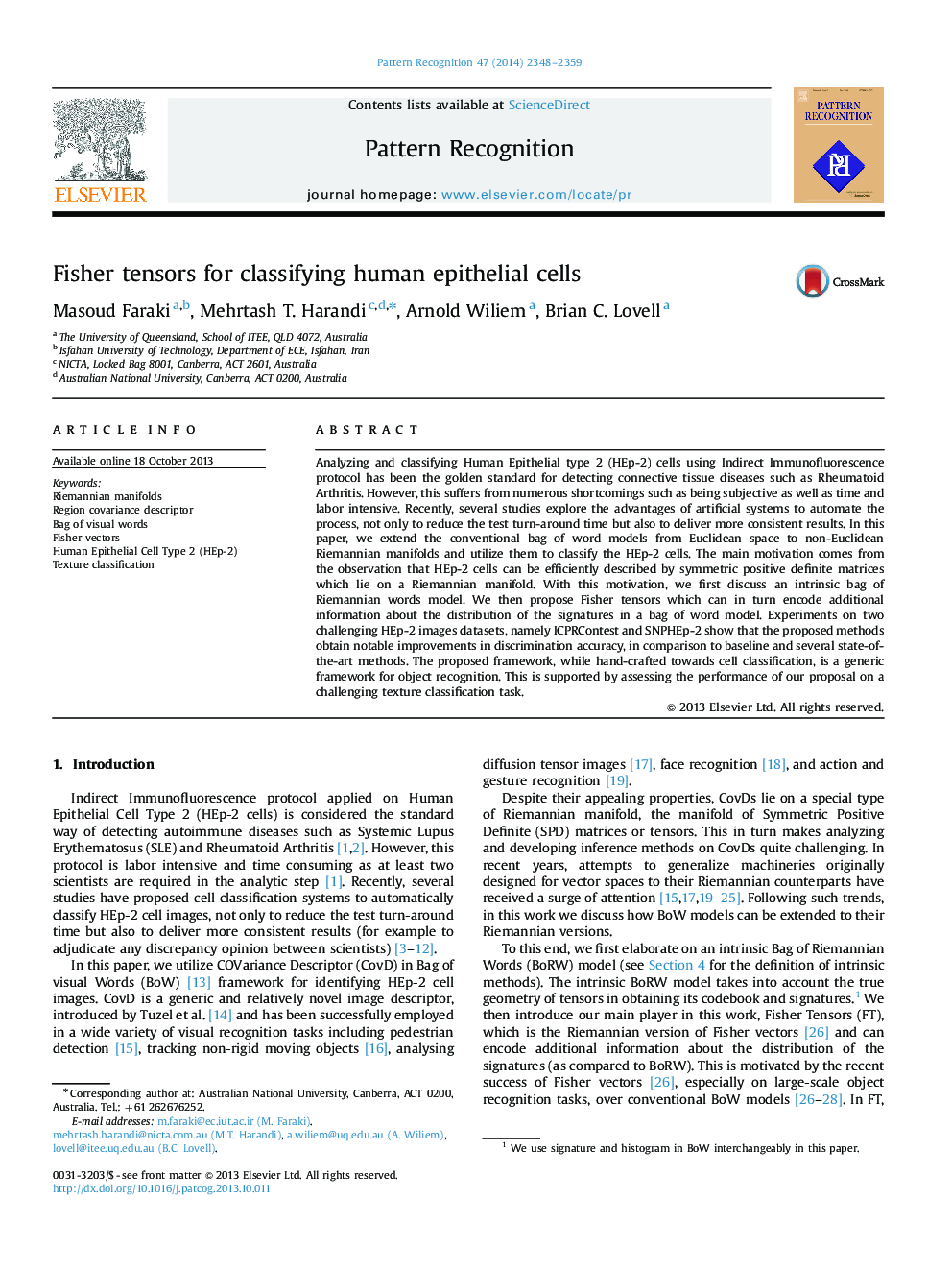| Article ID | Journal | Published Year | Pages | File Type |
|---|---|---|---|---|
| 530764 | Pattern Recognition | 2014 | 12 Pages |
•Exploring region covariance descriptors for representing HEp-2 cells.•Introducing bag of Riemannian words for efficient classification of HEp-2 cells.•Proposing Fisher tensors as an extension of bag of Riemannian words for classifying HEp-2 cells.•Thorough experiments show proposed approach outperforms state-of-the-art methods.
Analyzing and classifying Human Epithelial type 2 (HEp-2) cells using Indirect Immunofluorescence protocol has been the golden standard for detecting connective tissue diseases such as Rheumatoid Arthritis. However, this suffers from numerous shortcomings such as being subjective as well as time and labor intensive. Recently, several studies explore the advantages of artificial systems to automate the process, not only to reduce the test turn-around time but also to deliver more consistent results. In this paper, we extend the conventional bag of word models from Euclidean space to non-Euclidean Riemannian manifolds and utilize them to classify the HEp-2 cells. The main motivation comes from the observation that HEp-2 cells can be efficiently described by symmetric positive definite matrices which lie on a Riemannian manifold. With this motivation, we first discuss an intrinsic bag of Riemannian words model. We then propose Fisher tensors which can in turn encode additional information about the distribution of the signatures in a bag of word model. Experiments on two challenging HEp-2 images datasets, namely ICPRContest and SNPHEp-2 show that the proposed methods obtain notable improvements in discrimination accuracy, in comparison to baseline and several state-of-the-art methods. The proposed framework, while hand-crafted towards cell classification, is a generic framework for object recognition. This is supported by assessing the performance of our proposal on a challenging texture classification task.
